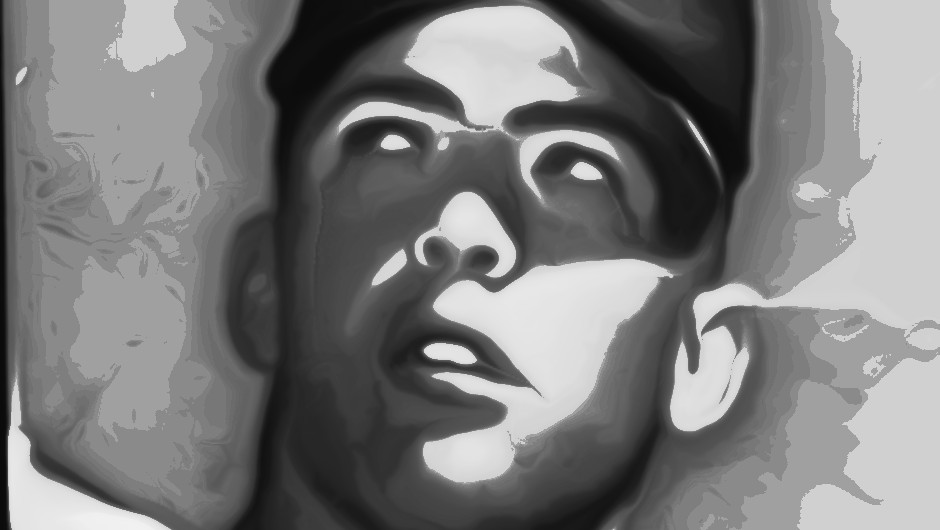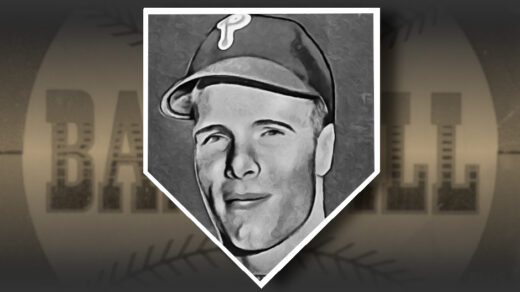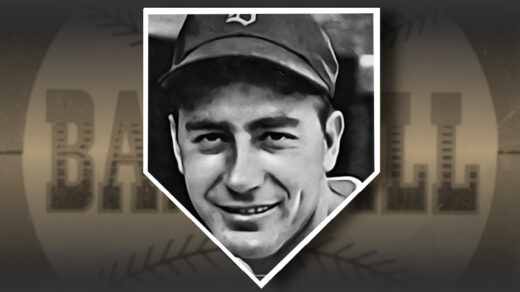When I decided to start collecting cards again I drew up a list of the sets that most influenced my view of the hobby. One of the first to come to mind was 1952 Topps, an issue regarded by many as the first to include each of the aspects of ideal postwar cards. The set is anchored by a Mickey Mantle card that might be the most recognizable sports card ever produced. Other greats of the era appear with their 1952 cards often being their most popular cardboard appearance.
Collecting Goal
As a kid in the 1990s I was ecstatic when I obtained a beat up common and never tired of the set. This set ranks securely in second place for influence on my collecting passions and is my favorite representation of the era. I plan on building a complete set over the course of the next decade. Unlike my modern collection, these cards will be sought in lower grades. I love the set, but I have no intention of spending many tens of thousands of dollars chasing high-grade examples.
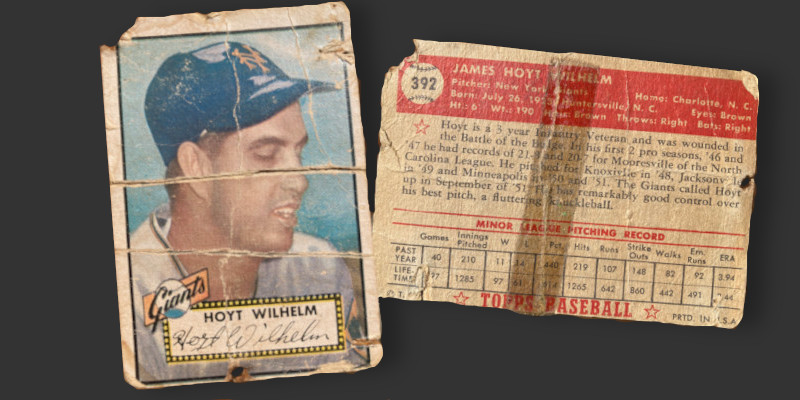
Innovation
Baseball has been described as a game for collectors, for those who chase cardboard pictures as well as those who collect an unlimited supply of freshly generated statistics and storylines. Topps delivered on each of these counts in 1952. The set was the first 1950s issue to use photographs rather than photo-inspired paintings. Generous space on the back of the cards allowed for longer stories from players’ pasts. Topps also introduced the now ubiquitous stat lines to the reverse side, informing kids of both prior year and lifetime performance.
A Massive (and Odd) Checklist
Having issued various small sets in 1951, Topps went on the attack the following year against Bowman Gum’s market-leading position in sports cards. Topps issued a massive set featuring 407 different players against Bowman’s 252-subject offering. Setting Topps further apart was the large size of its cards. Each card featured more than 50% additional surface area compared to Bowman which had used its same size from the previous year.
Topps’ aggressive design was needed in order to counter Bowman’s existing popularity and legal machinations designed to ensure continued dominance. For years Bowman had engaged various stars through contracts that made their likeness on sports cards exclusive to the company. Topps attempted to pre-empt Bowman with higher cash offers for exclusive access and met with mixed results. Jackie Robinson was a key signing for Topps and remained with the firm for the rest of his career. Absent from Topps was Stan Musial and Ralph Kiner, both of which appeared in Bowman’s issue. Other popular players were overlooked by both (Satchell Paige) or away from baseball for military service (Ted Williams, Whitey Ford).
Topps’ larger checklist necessitated reaching further down the talent scale, resulting in larger team checklists and a large helping of rookies and coaches. While the appearance of coaches and managers wasn’t unprecedented, Topps allocated 16 of 407 cards to old guys wearing athletic clothing. New York based teams are heavily represented, accounting for 109 cards on the checklist. Only 26 members of the Hall of Fame appear despite a 400+ sampling of players. Of these, four are coaches or managers (Bill Dickey, Leo Durocher, Dick Williams, and Billy Herman). The low number of top tier players is made further apparent when considering how many of the HOF population is depicted in their first or second season, a time at which few could imagine where their careers would be heading.
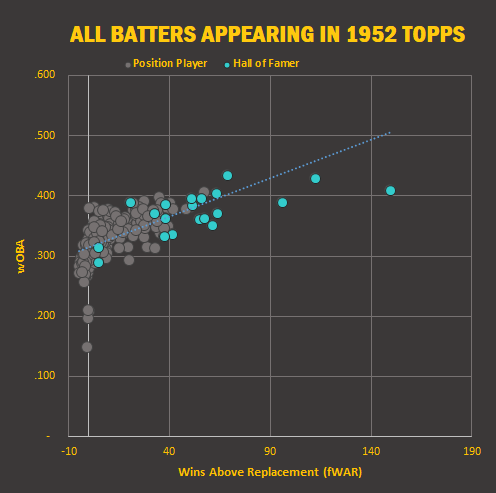
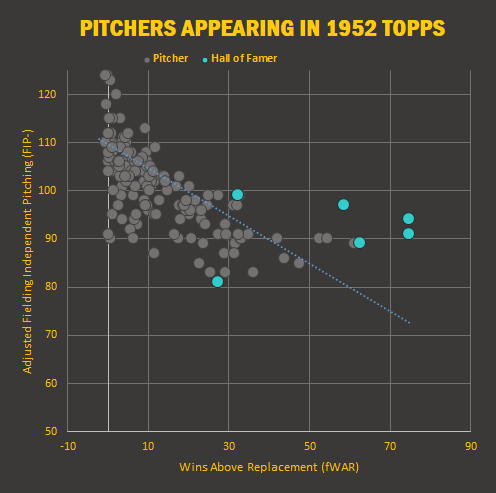
Thrown Away
Stories of parents throwing away their kids’ dusty baseball cards are so common they have become cliché. This set, however, has a story that tops all accounts of spring cleaning going too far. Topps arranged to sell its cards in staggered releases throughout the baseball season with the final 97 cards hitting shelves with the arrival of the World Series. Consumer interest had waned by that point, prompting Topps to take back unsold inventory. Management pursued multiple avenues to divest the leftover cards, including repackaging for sale in future years and wholesale distribution to carnival operators for use as prizes.
None of these initiatives gained traction and the company found itself with a mountain of unsold material taking up space in its New York facilities throughout the decade. Growing sales made the unsold boxes more problematic as they soaked up valuable floor space in an expensive market. Seeking a way to cheaply dispose of the cards, Topps made a deal to dump the inventory at sea.
It’s a great story and helps explain why the final 97 cards are so difficult to find. It’s almost too good, prompting disbelief on my part for years. That skepticism proved to be misplaced after I came across a Sports Collectors Digest interview with Sy Berger confirming the story. Berger was an intricate part of Topps’ early success. He wrote content for the backs of cards and obtained player permission to appear on the firm’s products. He also happened to be the person who arranged for cards to take a field trip to the Atlantic Ocean in 1959/1960.
[September 2021 Edit: I’m back in the camp that thinks the barge story is all wet.]
Final Notes
Progress on this set can be seen on the 1952 Topps checklist.
TEN BEST PLAYERS APPEARING IN 1952 TOPPS
| PPlayer | Team | wOBA | WAR |
|---|---|---|---|
| Willie Mays | New York Giants | .409 | 149.9 |
| Mickey Mantle | New York Yankees | .428 | 112.3 |
| Eddie Mathews | Boston Braves | .389 | 96.1 |
| Johnny Mize | New York Yankees | .433 | 68.6 |
| Duke Snider | Brooklyn Dodgers | .404 | 63.5 |
| Yogi Berra | New York Yankees | .370 | 63.7 |
| Jackie Robinson | Brooklyn Dodgers | .406 | 57.2 |
| Bill Dickey | New York Yankees | .396 | 56.1 |
| Pee Wee Reese | Brooklyn Dodgers | .350 | 61.3 |
| Richie Ashburn | Philadelphia Phillies | .362 | 57.4 |

